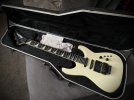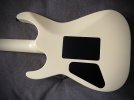That's more than I've played of originals. At a $20K entry, correct? That's unequivocally guitarist rape level pricing in my senses. I could've played some, but refused because of the aforementioned feelings on $20K to make a guitar what it should be closer to outta the gate at $7K. A view based on the same principle applies to a Murphy vs. real 59's - it's still not - foremost that none of the materials were from the period to make it 'real'. There is no justification for a $12K increase in price from $7K- except to make the charges fully attributed to labor. More than double the price of a new Standard at $3K. Murphy's more than 6 times the price of a new Standard. Honestly, I believe Gibson found the cash cow that would move 'holy grail' level product at a huge markup the materials don't suggest should be appropriate at $6700, moreso at $20K. To say 'aging a guitar without the guitar being even 1 day older' valuing it worth another $12K minimum is another level of it from the price vs. measurable difference with testers having as completely blind POV as can be created.
My guess would be that in blind recordings in mixes, there's a fair amount of Gibson affictionados who would be hard pressed to differentiate a Heritage (as long as all have the same pickups) as a real '59, or a Murphy - both of which they'd never heard before. That's the one thing I could hear straight away, that the Heritage changed their pickup recipe from the original. But better guitars in most every sense I experienced at a shop that may get to 'select their LP stock' in whatever sense that is. At the end of discussions on the net, I say enjoy and love the Gibson LP, friend. It comes down to our feelings about what is in our hands. For me, the wool was pulled aggressively from my eyes, ears and hands. I am glad. Personal experience with a product, or 'mileage' always varies the longer I live. Then there's the unmeasurable affection for a product that elevates said product higher. That's the joy of our humanity.
BTW - I still have a 1986 Charvel/Jackson Model 1 (your pic, correct?) but with a Kahler instead of Floyd. I love those guitars, especially for the neck and frets. Mine needs a refret and all new electronics in the worst way.


 Oh well, I guess I’m going guitar shopping.
Oh well, I guess I’m going guitar shopping.